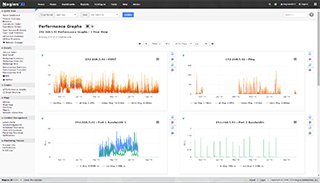
Volatile Services
Need Help Configuring Nagios?
Our tech support team is happy to help you with any questions you might have. Contact us on our online support forum at https://support.nagios.com/forum/
Nagios XI Makes Monitoring Easier:
Nagios XI is the easy-to-use, enterprise version of Nagios that features:
- Web-Based Configuration provides advanced configuration features
- Monitoring Wizards make it easy to monitor new devices, applications, and services
- Customizable Dashboards allow for per-user customization
- Integrated Performance Graphs provide trending and capacity planning information
- Advanced Reports provide data insight and exporting capabilities
- Data Visualizations enable powerful analysis of patterns and problems
- Nagios Core Import functionality makes it easy to migrate from Nagios Core
- ... and many other features
Download a free 30-day trial to give Nagios XI a spin.
Inquire today and let our Quickstart team help you get started with Nagios XI
 Up To: Contents
Up To: Contents
 See Also: State Stalking
See Also: State Stalking
Introduction
Nagios Core has the ability to distinguish between "normal" services and "volatile" services. The is_volatile option in each service definition allows you to specify whether a specific service is volatile or not. For most people, the majority of all monitored services will be non-volatile (i.e. "normal"). However, volatile services can be very useful when used properly.
What Are They Useful For?
Volatile services are useful for monitoring
- things that automatically reset themselves to an "OK" state each time they are checked
- events such as security alerts which require attention every time there is a problem (and not just the first time)
What's So Special About Volatile Services?
Volatile services differ from "normal" services in three important ways. Each time they are checked when they are in a hard non-OK state, and the check returns a non-OK state (i.e. no state change has occurred)
- the non-OK service state is logged
- contacts are notified about the problem (if that's what should be done). Note: Notification intervals are ignored for volatile services.
- the event handler for the service is run (if one has been defined)
These events normally only occur for services when they are in a non-OK state and a hard state change has just occurred. In other words, they only happen the first time that a service goes into a non-OK state. If future checks of the service result in the same non-OK state, no hard state change occurs and none of the events mentioned take place again.
Tip: If you are only interested in logging, consider using stalking options instead.
The Power Of Two
If you combine the features of volatile services and passive service checks, you can do some very useful things. Examples of this include handling SNMP traps, security alerts, etc.
How about an example. Let's say you're running PortSentry to detect port scans on your machine and automatically firewall potential intruders. If you want to let Nagios know about port scans, you could do the following:
Nagios Configuration:
- Create a service definition called Port Scans and associate it with the host that PortSentry is running on.
- Set the max_check_attempts directive in the service definition to 1. This will tell Nagios to immediate force the service into a hard state when a non-OK state is reported.
- Set the active_checks_enabled directive in the service definition to 0. This prevents Nagios from actively checking the service.
- Set the passive_checks_enabled directive in the service definition to 1. This enables passive checks for the service.
- Set this is_volatile directive in the service definition to 1.
PortSentry Configuration:
Edit your PortSentry configuration file (portsentry.conf) and define a command for the KILL_RUN_CMD directive as follows:
KILL_RUN_CMD="/usr/local/Nagios/libexec/eventhandlers/submit_check_result host_name 'Port Scans' 2 'Port scan from host $TARGET$ on port $PORT$. Host has been firewalled.'"
Make sure to replace host_name with the short name of the host that the service is associated with.
Port Scan Script:
Create a shell script in the /usr/local/nagios/libexec/eventhandlers directory named submit_check_result. The contents of the shell script should be something similiar to the following.
#!/bin/sh
# Write a command to the Nagios command file to cause
# it to process a service check result
echocmd="/bin/echo"
CommandFile="/usr/local/nagios/var/rw/nagios.cmd"
# get the current date/time in seconds since UNIX epoch
datetime=`date +%s`
# create the command line to add to the command file
cmdline="[$datetime] PROCESS_SERVICE_CHECK_RESULT;$1;$2;$3;$4"
# append the command to the end of the command file
$echocmd $cmdline >> $CommandFile
What will happen when PortSentry detects a port scan on the machine in the future?
- PortSentry will firewall the host (this is a function of the PortSentry software)
- PortSentry will execute the submit_check_result shell script and send a passive check result to Nagios
- Nagios will read the external command file and see the passive service check submitted by PortSentry
- Nagios will put the Port Scans service in a hard CRITICAL state and send notifications to contacts
